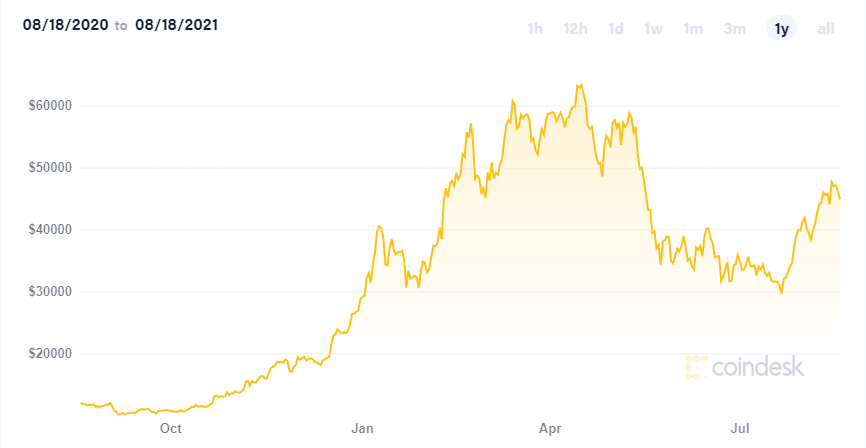“The future of money is digital currency,” says Bill Gates.
The world is beginning to accept digital currencies with open arms. The previous decade was flush with skepticism about digital assets. It seems things are quickly changing with big wigs like Elon Musk entering the digital assets arena with massive amounts of money.
That said, the cryptoverse is yet to mature. This means early-bird investors have an opportunity to capitalize on the growing acceptance of these assets.
As the acceptance of cryptocurrencies like Bitcoin and Ethereum begins to increase, their value will likely appreciate. Early bird investors could pocket some serious gains in the process.

Top 5 Tips for Investing in Cryptocurrencies
Investing in cryptocurrencies is a risky proposition. Investors trying to take their first step should familiarize themselves with the nuances of the cryptoverse to ensure the safety of their capital. This article aims to help investors with a few tips as they make their first investment.
1. Start With Due Diligence
Making investments based on newspaper headlines or peer recommendation is a recipe for disaster for several reasons. There is no “one for all” cryptocurrency. All coins come with a set of fundamental strengths and weaknesses. Plus, they also have different risk profiles.
In the digital world, there is no excuse for a lack of financial expertise. All it takes is some reading. Before investing, investors must use online resources like All Crypto Whitepapers to gauge investment opportunities.
Whenever there’s a coin that doesn’t have enough information available for investors to make an informed decision, it’s best to move on to other opportunities. It’s never wise to put money into an asset with a blindfold on.
Plus, nor is it wise to choose a medium of investment that is shady.
The flock of new crypto investors has led to the establishment of several crypto exchanges across the globe. In absence of clarity on rules and regulations, some exchanges can often turn out to be scammers. Therefore, it’s prudent to choose a well-known exchange.
First-time investors, in particular, should stick to a mainstream cryptocurrency and a well-established exchange. For instance, a first-time investor could buy ETH on MoonPay. This is a far safer bet than buying Dogecoin from a new, unknown exchange.

2. Learn The Basics Of Cybersecurity
Digital assets have given cyber criminals a new playground for malicious activities. For this reason, investors must protect their cryptocurrency investments the same way as they protect their online banking information.
Investors often take cybersecurity for granted and unintentionally develop a lazy approach. For instance, using weak passwords or using one password for all accounts. It’s absolutely critical to keep passwords long and hard to guess. It’s also important to use a different password for every website.
To make things airtight, investors should change their passwords multiple times a year. Often, investors are worried about forgetting the password and having to take the pain to use the password recovery option. This is no reason to compromise cybersecurity, though. Instead, investors should consider using a password manager.

Investors also need to protect their private keys that are stored in wallets. Online wallets are known as hot wallets and are considered less secure than their offline counterparts, called cold wallets. A cold wallet could be a USB flash drive or just a piece of paper where investors can store their private keys.
Loss of a key is loss of money. Once a private key is lost, the investor’s coin will be forever lost in the crypto abyss. This is surprisingly common, too. A fifth of all Bitcoins have gone missing. This is why it’s important to keep private keys secure in a cold wallet that doesn’t have access to the internet.
For beginner cryptocurrency investors or high-volume traders, though, hot wallets may provide more versatility. In most cases, it’s ideal to find the right balance between storing keys in hot and cold wallets.
3. Prepare For Volatility And Diversify
Cryptocurrencies are volatile, period. Any investor who ignores this fact is signing up for a nightmarish experience. Investors that can’t stomach capital erosion should stay away from cryptocurrencies, lest they want to spend their nights terrorizing themselves looking at the coin’s ticker.
Investment requires a rational approach. Fear and panic can cause investors to make decisions that come with significant costs. To avoid this, it’s best that investors prepare themselves mentally and only invest capital that they can afford to lose.
However, investors do have the option to mitigate the risk of volatility. Traditional wisdom advises not to put all eggs in one basket. The principle applies to crypto investments, too. Investors should diversify their crypto holdings across different, uncorrelated coins.
For instance, an investor who purchases $100 worth of Bitcoin will lose $30 of capital when Bitcoin’s price drops by 30%. On the contrary, an investor who purchases $50 worth of Bitcoin and $50 worth of Ethereum, will lose only $15 when Bitcoin drops by 30% (assuming ETH’s price remains constant).
Diversification shouldn’t be limited to digital assets, of course. An investor with $20,000 shouldn’t invest all the money in a diversified, crypto-only portfolio.
Cryptocurrencies should, at least initially, form a small portion of an investor’s overall portfolio. The overall portfolios should also be diversified across traditional asset classes such as equities, bonds, and gold.
Not only does this lower the portfolio’s overall risk, but assets like gold can even function as a hedge. Gold prices have historically shared a negative correlation with equities, though they are entirely uncorrelated with crypto. Regardless, the presence of gold can provide a cushion for losses in an investor’s portfolio.
4. Go Slow
With everybody at the office and gym talking about their crypto gains, it’s natural for investors to want to quickly onboard the crypto train. This can often shorten an investor’s journey in the cryptoverse. Nevertheless, going slow is key to playing the long-term game.
This doesn’t just apply to new investors. Even the most experienced investors go slow when taking positions in a new coin.
New investors must take some time to familiarize themselves with the process and the overall market. Trying a few strategies is always a fruitful endeavor and helps investors see what works for them and what doesn’t.
This allows investors to learn without risking a significant portion of their capital. Granted, for the first trades, investors may feel as though they are losing out on big gains. However, this could also protect them against massive losses, especially in the long term.
5. Set Targets And Inculcate Discipline
If there’s one thing that’s guaranteed in the cryptoverse, it’s volatility. New investors may experience volatility the likes of which they would have rarely experienced in traditional markets. For instance, let’s look at how Bitcoin’s price behaved over the past year:

The volatility can make investors anxious or induce FOMO. When a coin’s price is in an upswing, the investor may feel reluctant to sell because of a FOMO. On the contrary, when the price is plummeting, the investor may feel uneasy and consider taking the loss.
Neither of these is a good place to be in. Instead, set profit and loss targets beforehand, similar to how investors use a target and stop loss for equities.
Investors should inculcate discipline and stick to these targets for profit and losses. If an investment seems like a poor choice, don’t sit it out waiting for the price to recover. Exit the position and live to fight another day.
If the prices have appreciated to or beyond the target, it makes sense to exit the position and take the gain instead of letting greed take control.
Beginner investors are more prone to the dreaded FOMO. Although, they aren’t just prone to the fear of missing out on existing positions, they often fear missing out on further appreciation even before taking the position.
For instance, when a beginner investor looks at the price of an asset rally, the immediate thought they have is to join the rally. This is easier said than done. There’s no telling how the price of a cryptocurrency will behave moving forward.
The best approach, then, is to take a position when the price looks favorable. Generally, a good time to enter is when the prices have bottomed out and are ready to revert to an upward trajectory.
Investing in Cryptocurrencies is a High-Risk, High Return Affair
These tips should set an investor on the right path to make their first cryptocurrency investment. Regardless of any other factors, cryptocurrencies are volatile. As a rule of thumb, financial assets reward risk with a risk premium, i.e. a higher return for taking more risk.
Cryptocurrency investors enjoy massive returns because they take a lot more risk, too. It’s not every day that cryptocurrency investors smile through their day. Some days, they may regret their decision to invest in cryptocurrencies, while on others they will thank God for this smart decision.
Cryptocurrencies offer investors a unique opportunity to grow their wealth in the long term. As long as investors are aware of the risks, well-prepared, and ready to take a disciplined approach, investing in cryptocurrencies can offer them several benefits.
Author Bio: Arjun Ruparelia
An accountant turned writer, Arjun writes financial blog posts and research reports for clients across the globe. Arjun has five years of financial writing experience across verticals. He is a CMA and CA (Intermediate) by qualification.
Follow Techdee for more!





